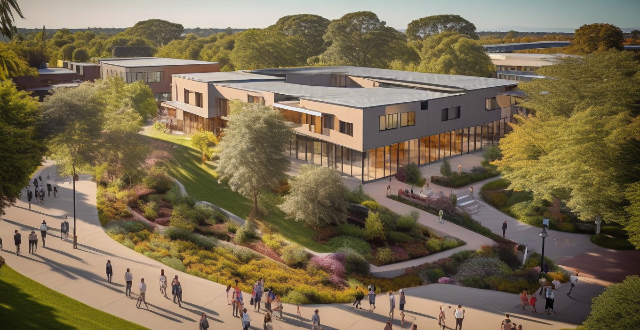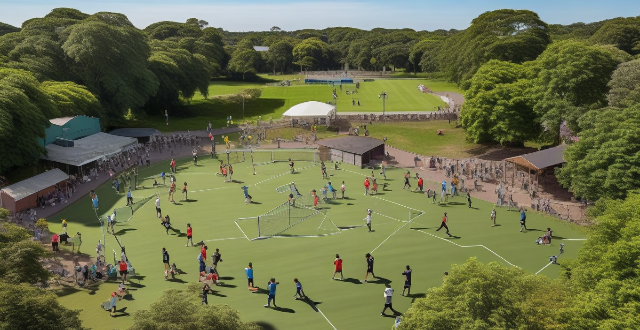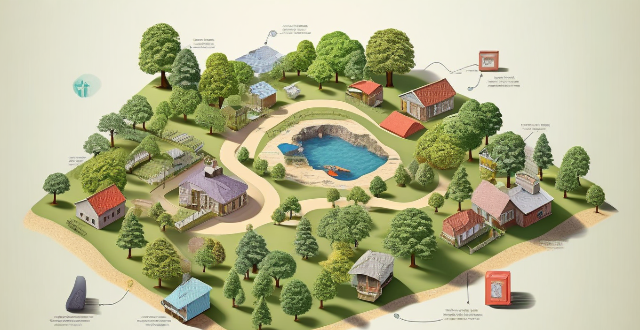Community Specific

What are the different types of scholarships available ?
Scholarships are financial aid awards that help students cover the costs of college or university education. They come in various forms, each targeting different groups of students based on merit, need, athletic ability, artistic talent, diversity, subject matter, leadership skills, community service, corporate affiliation, local organization membership, religious background, international study goals, and specific career training. Examples include the National Merit Scholarship for academic achievement, Federal Pell Grants for financial need, NCAA athletic scholarships for sports prowess, the Presidential Scholarship in the Arts for artistic talent, the Hispanic Scholarship Fund for diversity, Health Professions Scholarship Program for subject-specific majors, Jack Kent Cooke Foundation Scholarships for leadership and community service, Coca-Cola Scholars Program for corporate relations, Kiwanis Club scholarships for local community members, Catholic Education Foundation Scholarships for religious affiliation, Fulbright Program for international studies, and Nurse Corps Scholarship Program for career-specific training.

How can immigrants effectively integrate into a new community ?
Effective integration of immigrants into a new community involves learning the local language, engaging with the community, embracing cultural differences, building a support network, seeking out resources, and being patient and persistent. These strategies can help immigrants communicate effectively, find employment opportunities, understand the culture, make friends, and navigate the legal processes involved in immigration.

How do sports initiatives support community health and wellbeing in cities ?
Sports initiatives in cities are crucial for promoting physical activity, social interaction, mental health, and overall quality of life. The collaboration between the International Olympic Committee and PATH is a prime example of how these initiatives can make a significant impact on community health. By increasing access to health-enhancing community sport activities, sports initiatives support physical activity, enhance social interaction, improve mental health, raise awareness about health issues, and contribute to economic impact and urban development. These initiatives are valuable investments for city planners and policymakers as they promote community health and wellbeing in urban areas.

What are some successful examples of sports-based community development initiatives ?
Sports-based community development initiatives have been successful in various parts of the world, bringing people together and fostering a sense of community. Some notable examples include Sport for Social Impact, Right to Play, Sport and Recreation Victoria, and Sport England. These organizations use sports to tackle social challenges such as poverty, gender inequality, lack of education, and physical inactivity. Their programs range from soccer games promoting peace in Israel and Palestine to after-school programs teaching life skills in areas affected by war, poverty, and disease. These examples demonstrate the power of sports-based community development initiatives to bring people together, promote health and well-being, and address social challenges.

How can we measure the effectiveness of community climate adaptation efforts ?
Measuring the effectiveness of community climate adaptation efforts is crucial for understanding their impact on resilience to climate change. Key steps include setting clear objectives, developing relevant indicators, collecting and analyzing data, transparent reporting, evaluating success, iterative improvement, community engagement, and policy alignment. By following these steps, communities can ensure their adaptation efforts are effective and continuously improved.

How do I find scholarships specific to my field of study ?
Finding scholarships specific to your field of study can be a challenging task, but it is definitely worth the effort. Here are some steps you can take to find scholarships that match your academic interests and career goals: 1. Research your field thoroughly to identify key organizations, associations, and institutions that offer scholarships related to your area of interest. 2. Use online scholarship search engines such as Fastweb, ScholarshipOwl, and Cappex to find scholarships based on your academic achievements, extracurricular activities, and career goals. 3. Check with your school's financial aid office for information about scholarships specific to your field of study and resources such as scholarship databases or lists of local organizations that offer scholarships. 4. Attend scholarship workshops and events hosted by your school or local community organizations to network with professionals in your field and learn about scholarship opportunities. 5. Contact professional organizations and associations in your field directly to find out about available scholarships and application requirements.

What role do sports clubs and community centers play in promoting public health initiatives ?
Sports clubs and community centers significantly contribute to public health efforts by offering programs and services that encourage physical activity, provide educational opportunities, build social support networks, target specific demographics, and collaborate with health organizations. These establishments play a crucial role in promoting healthier lifestyles through their facilities, workshops, group activities, youth and senior programs, and partnerships with hospitals and awareness campaigns. By catering to diverse age groups and interests, sports clubs and community centers help foster a culture of health and wellness within communities.

What factors should be considered when sizing a drive motor for a specific load ?
Factors to consider when sizing a drive motor for a specific load include the type of load, load inertia, duty cycle, environmental conditions, electrical requirements, physical constraints, and safety and regulatory requirements.

How can sports clubs and teams collaborate with local authorities to support community development projects ?
This topic discusses how sports clubs and teams can collaborate with local authorities to contribute to community development projects. It outlines steps such as understanding the local landscape, building partnerships, implementing projects, and evaluating impact. The text emphasizes the importance of mutually beneficial initiatives and clear communication channels between stakeholders. It also provides examples of project implementation, such as youth mentorship programs and community clean-up days. Finally, it stresses the need for continuous evaluation and improvement to ensure effective use of resources and ongoing community benefit.

How can we involve community members in climate adaptation planning ?
Community engagement is crucial for successful climate adaptation planning. To involve community members, identify and engage stakeholders, develop a stakeholder engagement plan, use multiple channels of communication, involve community members in decision making, provide training and education, foster partnerships and collaboration, and monitor and evaluate progress. By doing so, you can create a more resilient community that is better prepared for the impacts of climate change.

What role do community gardens play in city greening efforts ?
Community gardens play a significant role in city greening efforts by providing environmental, social, economic, and urban planning benefits. These gardens improve air quality, enhance biodiversity, and promote soil health. They also foster community building, offer educational opportunities, and contribute to health promotion. Economically, community gardens provide food security and create job opportunities. Integrated into urban planning, they beautify cities and promote sustainable development. Overall, community gardens are vital for ecological health and improving residents' quality of life.

How do sports events promote social interaction and community building ?
Sports events play a significant role in promoting social interaction and community building. They bring people together, foster a sense of belonging, and create opportunities for individuals to connect with one another. This is achieved through encouraging participation, building community spirit, providing entertainment and recreation, facilitating networking opportunities, and enhancing diversity and inclusion. By bringing people together around a shared passion for sports, these events create lasting connections and positive experiences that extend far beyond the playing field.

In what ways do women's empowerment initiatives contribute to community development ?
Women's empowerment initiatives are crucial for community development as they address gender inequalities and foster inclusivity. These initiatives benefit not only women but also have a positive ripple effect on the broader community, leading to more sustainable and equitable growth. Economic growth is achieved through increased participation in the workforce, entrepreneurship and innovation, and improved household economics. Social development is promoted through health and well-being, education, and gender equality. Political empowerment is enhanced through increased participation in decision-making and promotion of good governance. Environmental sustainability is ensured through resource management and climate action. Cultural preservation and exchange are enriched through artistic expression and cultural exchange. Women's empowerment initiatives are essential for comprehensive community development, addressing gender inequalities, promoting inclusivity, and paving the way for sustainable growth, social cohesion, and a brighter future for all members of the community.

How can we raise awareness about the importance of community climate adaptation ?
To raise awareness about the importance of community climate adaptation, several strategies can be employed: 1. **Education and Outreach Programs**: Conduct workshops, engage schools, collaborate with media outlets, and develop informational materials to educate people about climate change and its implications. 2. **Community Engagement Initiatives**: Encourage public participation in discussions, foster partnerships with local organizations, and promote civic leadership to drive climate adaptation efforts. 3. **Visual Aids and Creative Approaches**: Use art, performances, exhibits, infographics, and other creative means to communicate the importance of climate resilience. 4. **Online Platforms and Social Media**: Leverage digital tools like social media campaigns, online forums, virtual reality experiences, and interactive apps to reach a wider audience. 5. **Policy Advocacy and Support**: Advocate for favorable policies, provide financial incentives, and support legislation that enhances community resilience against climate change.

What role do sports organizations play in fostering community engagement and participation ?
The text discusses the role of sports organizations in fostering community engagement and participation. It highlights their contributions in various areas including community building, educational outreach, economic impact, and social responsibility. Sports organizations promote social interaction by offering memberships, organizing events, and providing volunteer opportunities. They enhance diversity and inclusion through inclusive policies, adaptive sports programs, and cultural celebrations. In terms of educational outreach, they promote health and wellness through fitness programs, workshops, and school collaborations. They also develop life skills such as leadership, character development, and career opportunities. Sports organizations stimulate local economies by hosting tournaments and events, promoting sports tourism, and creating jobs. They support local businesses through partnership programs, community marketplaces, and merchandise sales. Additionally, sports organizations demonstrate social responsibility by adopting green initiatives, planning eco-friendly events, launching educational campaigns, organizing fundraising events, having athlete ambassadors, and offering matching gift programs. Overall, sports organizations play a crucial role in building social connections, enhancing diversity and inclusion, providing educational outreach, stimulating local economies, and embracing social responsibility.

What benefits do sports-specific training programs offer ?
Sports-specific training programs offer several benefits, including improved performance, increased physical fitness, enhanced mental toughness, better recovery and injury prevention, and personalized coaching and support. These programs focus on developing the skills, techniques, and physical abilities required for success in a particular sport, helping athletes reach their full potential while also improving their overall health and well-being.

Can sports be used as a tool for social change and community development ?
This text discusses the potential of sports as a tool for social change and community development. It highlights how sports can break down barriers, promote health and well-being, and contribute to education and personal development. The article also explores how sports can address social issues, empower communities economically, and promote peace and reconciliation. However, it emphasizes the need for equitable resource allocation, accessibility, and sustainability to fully realize the potential of sports in societal transformation.

How does one select the appropriate gloves for handling specific chemicals ?
When dealing with chemicals, it is crucial to choose the right gloves to protect your hands from potential harm. Here are some steps to help you select the appropriate gloves for handling specific chemicals: 1. Identify the type of chemical you will be working with, such as acids, bases, solvents, and oxidizers. 2. Determine the level of protection needed by consulting a material safety data sheet (MSDS) or a hazardous materials reference guide. 3. Choose the right glove material based on the level of protection needed, such as nitrile, latex, neoprene, butyl, or viton/teflon. 4. Consider other factors such as size, fit, thickness, texture, and cuff style when selecting gloves. 5. Test the gloves before using them for handling specific chemicals to ensure they provide adequate protection. By following these steps, you can select the appropriate gloves for handling specific chemicals and ensure your hands are protected from potential harm.

What impact does sports have on the social cohesion and community spirit in rural areas ?
The article discusses the impact of sports on social cohesion and community spirit in rural areas. Sports bring people together, promote teamwork, and create a sense of belonging that can strengthen the fabric of a community. The article explores how sports build social capital by forming friendships and encouraging civic engagement. It also highlights how sports promote teamwork and cooperation by teaching communication skills and collaboration towards a common goal. Finally, the article emphasizes how sports create a sense of belonging within a community by supporting local teams and participating in community events. Overall, sports have a significant impact on rural communities and contribute to their overall well-being.

How can I gauge the level of parental involvement and community support at a school ?
Gauging the level of parental involvement and community support at a school is crucial for parents when choosing an educational institution for their child. This can significantly impact a student's academic performance and overall development. To gauge these factors, parents can observe school events, talk to other parents, and research the school's reputation. When observing school events, parents should attend open houses, sports games/concerts, and volunteer opportunities to assess the turnout and engagement of parents during these events. A high turnout and active participation suggest strong parental involvement and community support. Parents can also connect with other parents through social media groups, PTA meetings, school drop-off/pick-up times, and school events to ask about their experiences regarding parental involvement and community support at the school. Asking about their level of involvement, supportiveness of the school, communication channels, and impact on student performance can provide valuable insights. Researching the school's reputation online through reviews, rankings, news articles, social media, forums, and message boards can also help gauge parental involvement and community support. Analyzing historical data such as enrollment trends, fundraising results, alumni success rates, and school surveys/feedback can further indicate the level of these factors over time. In conclusion, gauging the level of parental involvement and community support at a school involves attending school events, talking to other parents, and researching the school's reputation. By doing so, parents can make informed decisions about choosing the right school for their child that fosters a supportive and engaging environment conducive to academic success and overall development.

How can individuals contribute to the safe management of hazardous chemicals in their community ?
The article outlines various ways individuals can contribute to the safe management of hazardous chemicals in their community. It emphasizes the importance of education, staying informed, taking action, prevention and preparedness, and community collaboration. Individuals are encouraged to research common hazardous chemicals, identify potential health effects, monitor local news, attend public meetings, report leaks and spills, support strict regulations, participate in cleanup efforts, implement safe practices at home, create an emergency plan, build partnerships, and encourage transparency. By taking these steps, individuals can play a crucial role in ensuring the safe management of hazardous chemicals within their communities.

How do you analyze the performance of a specific industry within the stock market ?
Analyzing the performance of a specific industry within the stock market requires a comprehensive understanding of various factors that can impact the industry's growth and profitability. Key steps to follow include identifying the industry, studying its trends, analyzing the financial performance of key players, evaluating the competitive landscape, considering macroeconomic factors, using financial ratios and metrics, and considering industry-specific factors. By following these steps, you can gain a better understanding of the performance of a specific industry within the stock market and make informed investment decisions based on your analysis.

Are there any photography workshops or tours that focus on specific travel locations ?
Photography workshops and tours that focus on specific travel locations offer a unique opportunity for photographers to capture stunning images while exploring new places. These experiences are designed to help participants improve their photography skills, learn about the local culture, and create lasting memories. In this guide, we will explore some of the best photography workshops and tours available for various travel destinations. Benefits of participating in a photography workshop or tour include skill development, cultural immersion, networking opportunities, and personal growth. Examples of popular photography workshops and tours include landscape photography in Iceland, wildlife photography in Africa, street photography in Tokyo, underwater photography in the Maldives, and architectural photography in Europe. Participating in a photography workshop or tour focused on a specific travel location offers an unparalleled opportunity to combine your passion for photography with your love of travel. Whether you're interested in landscapes, wildlife, street scenes, underwater adventures, or architectural wonders, there is a workshop or tour out there waiting for you to discover it. So grab your camera, pack your bags, and get ready for an unforgettable photography journey!

How do I choose a gift for someone with specific hobbies or interests ?
Choosing a gift for someone with specific hobbies or interests can be both exciting and challenging. Here are some tips to help you find the perfect gift: 1. **Identify their hobbies or interests** by observing their daily activities or asking them directly. 2. **Research and educate yourself** about their hobby, join online communities, and learn what products or accessories are popular among enthusiasts. 3. **Consider their skill level** and choose gifts that will help them get started, improve their skills, or cater to their specific needs. 4. **Think outside the box** and consider giving experiences related to their hobby or subscription services that keep their hobby fresh and exciting. 5. **Personalize the gift** by adding monogrammed items or customized designs. 6. **Don't forget about presentation** by wrapping the gift nicely, choosing a beautiful gift bag, and including a handwritten note expressing your appreciation for their friendship.

What is the importance of community involvement in developing climate adaptation plans ?
Importance of community involvement in developing climate adaptation plans includes enhancing trust and legitimacy, addressing local needs and concerns, promoting co-production of knowledge, ensuring social justice and equity, and facilitating long-term sustainability.

How can we build climate resilience in our communities ?
Climate resilience is essential for community sustainability and well-being. Building it involves education, sustainable infrastructure, ecosystem conservation, economic strategies, community engagement, and research. Efforts must be collective across all sectors to achieve a resilient and sustainable future.

What is the role of community-based adaptation in addressing climate change ?
The text discusses the role of community-based adaptation in addressing climate change. It outlines seven key reasons why this approach is essential, including empowering local communities, tailoring solutions to specific local conditions, enhancing capacity and building resilience, promoting innovation and learning, reducing vulnerabilities and increasing preparedness, enhancing social cohesion and trust, and supporting sustainable development goals. Overall, the text emphasizes the importance of involving local communities in the adaptation process to build a resilient future in the face of climate change challenges.

What role do local governments play in promoting community climate adaptation ?
Local governments are crucial in promoting community climate adaptation by implementing policies and programs to mitigate risks, build resilience, and enhance coping capacity. Key responsibilities include risk assessment, developing adaptation plans, implementing measures such as infrastructure upgrades and ecosystem restoration, financing and funding, collaboration with partners, and monitoring progress. Examples of actions include integrating climate considerations into urban planning, promoting sustainable transportation, encouraging energy efficiency, supporting green spaces, and establishing early warning systems.

What strategies from environmental psychology can be used to encourage pro-environmental behavior in communities ?
This article discusses strategies from environmental psychology that can be used to encourage pro-environmental behavior in communities. The strategies include setting clear goals and feedback mechanisms, fostering a sense of community and collective responsibility, increasing awareness and information, enhancing personal and community benefits, making eco-friendly options easy and convenient, and utilizing role models and local champions. By employing these strategies, communities can promote sustainable practices and make significant strides towards a sustainable future.

What are the benefits of community-based adaptation to climate change ?
Community-based adaptation (CBA) to climate change is a process where communities use their local knowledge, resources, and skills to cope with the impacts of climate change. CBA has several benefits that make it an effective approach to addressing the challenges posed by climate change. These benefits include improved resilience, enhanced social capital, increased adaptive capacity, and cost-effectiveness. Improved resilience is achieved through localized solutions and empowerment. Enhanced social capital is achieved through collaboration and cooperation, as well as capacity building. Increased adaptive capacity is achieved through flexibility and innovation. Cost-effectiveness is achieved through lower costs and sustainability. Overall, CBA offers numerous benefits for addressing the challenges posed by climate change.